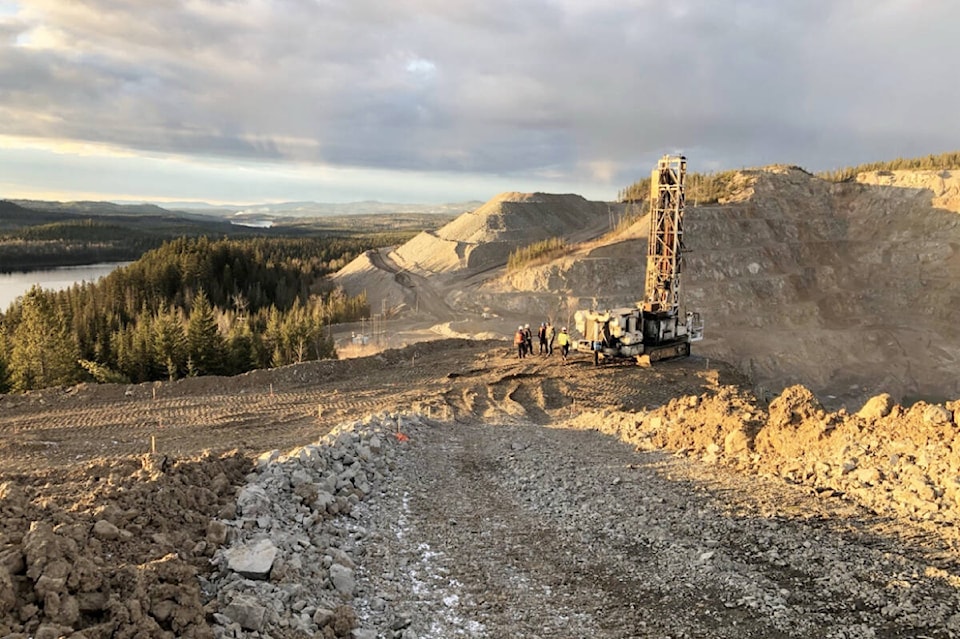After shutting down mining operations in May 2019 due to a weak copper market, Mount Polley Mine is expected to fully reopen this summer with the company looking to capitalize on rising global prices.
The mine, owned and operated by Imperial Metals Corporation, has spent the last several years in a remediation process which has included clean-up projects and a partial restoration of ecosystems damaged by the Aug. 4, 2014 tailings pond breach.
The breach caused wastewater from the mine to spill into local waterways. Shortly after, the mine suspended operations for one year to conduct investigations, which concluded the breach was caused by structural insufficiencies that were a result of glacial silt underneath the pond.
The mine resumed operations in 2015 and continued until 2019 when it closed for economic reasons. During this time, tailings were placed in temporary ponds as the main pond was still undergoing reconstruction.
Researchers from the University of Lethbridge’s biology department recently released a report on the effects of the 2014 tailings spill on freshwater scuds and mayfly larvae. Both are small species at the bottom of the food chain but are consumed in large quantities by fish such as Lake Trout and Rainbow Trout. Both species of fish are highly prized in the area by anglers as well as integral to large mammals like bears.
”The contaminant metals that were deposited into these lakes are actually getting into organisms at the base of the food chain,” said Gregory Pyle, the lead researcher on the project.
In a Facebook post published on May 31, 2022, Mount Polley Mining Corporation said they were “pleased that two recent scientific papers confirm our previously reported findings,” referencing Pyle’s work and the findings of another group of researchers.
In the post, the corporation says that the level of copper in the invertebrates is “not ecologically consequential” as there is no impact seen in fish from Quesnel Lake.
Pyle describes this claim as “not wholly accurate.”
According to him, it is too early to conclude that there has been no effect seen on fish in the affected region. A team of researchers led by Ellen Petticrew, a geography professor at the University of Northern British Columbia, is planning to look into those effects in the near future.
Despite remediation efforts by the company, Pyle believes that a complete cleanup of the lake is impossible.
“Contaminated tailings are in the lake and will remain there forever,” he said.
When asked about steps taken to prevent future spills, Brian Kynoch, president of Imperial Metals, pointed to the number of investigations that have taken place at the site since the spill, calling it “probably the most investigated site of a tailings facility in the province.”
“I am very proud of the environmental team, mine staff, our First Nation business partners, local contractors, and consultants at Mount Polley for the incrediable remediation work that has been done over the past seven years. I was excited when, in 2018, sockeye salmon returned in droves to Quesnel Lake watershed, since these salmon were the juveniles feeding in Quesnel Lake at the time of the breach in 2014. The strong return indicated a healthy sockeye population.”
Kynoch also added that the mine has been redesigned based on the investigative findings.
“The redesign should be the best possible,” he said.
Throughout the remediation, redesign, and reopening process, Imperial Metals said they have consulted with local residents and First Nations communities including the Williams Lake First Nation and Xatsull First Nation.
“They were instrumental,” Kynoch said.
In an additional response to questions, Kynoch noted in an email that Quesnel Lake fish are healthy and don’t present a risk to people who eat them. He added, Mount Polley mine just hosted a successful fishing derby that raised $20,850, which the mine donated to the community of Likely and will be used to build a new children’s playground.
Imperial Metals noted it is hoping to provide a boost to the local economy by capitalizing on rising copper and gold prices worldwide.
According to the company’s fourth quarter report in 2021, approximately 100 people were working at the mine site at the end of 2021. At its peak operation, the Mount Polley mine is expected to employ 355 people.
Read more: Disciplinary hearings announced regarding Mount Polley Mine breach
ruth.lloyd@wltribune.com
Like us on Facebook and follow us on Twitter
